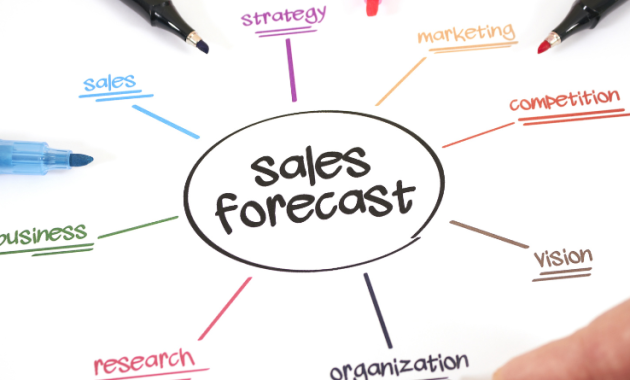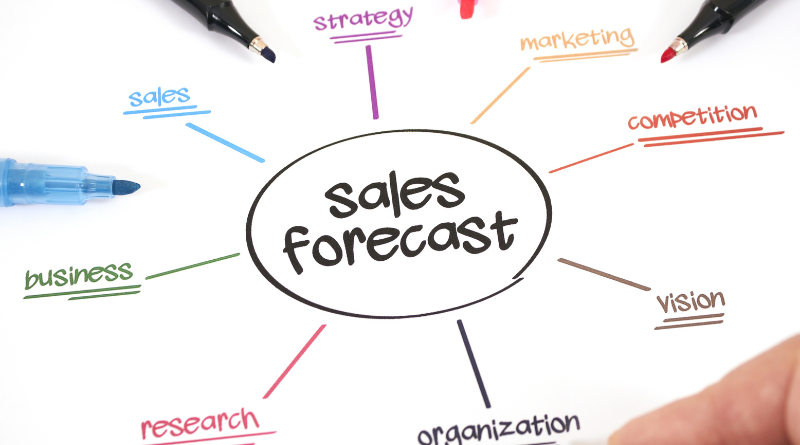
How to Make Better Forecasts Using Business Intelligence Software: A Data-Driven Approach
In the fast-paced world of business, the ability to accurately predict the future is a superpower. From anticipating market trends to optimizing resource allocation, accurate forecasts are crucial for success. However, traditional forecasting methods often fall short, relying on gut feelings and historical data that may not reflect current realities. This is where Business Intelligence (BI) software steps in, offering a data-driven approach to making better forecasts.
This article explores how to make better forecasts using Business Intelligence software. We will delve into the benefits of using BI for forecasting, the key features to look for, and practical tips for implementation. By leveraging the power of data, businesses can gain a competitive edge and make informed decisions that drive growth.
The Limitations of Traditional Forecasting
Before embracing the power of BI, it is essential to understand the limitations of traditional forecasting methods. These methods often rely on:
- Spreadsheet Models: While spreadsheets are versatile, they can become unwieldy and prone to errors when dealing with large datasets. Manual data entry and complex formulas increase the risk of inaccuracies.
- Gut Feelings and Intuition: Relying solely on experience and intuition can lead to biased forecasts, especially in dynamic market environments.
- Historical Data Analysis: Using past trends to predict the future may not be accurate when external factors, such as economic changes or new competitors, significantly alter the landscape.
These limitations can result in inaccurate predictions, leading to poor decision-making, missed opportunities, and wasted resources. Businesses need a more reliable and data-driven approach to forecasting.
The Power of Business Intelligence in Forecasting
Business Intelligence software transforms raw data into actionable insights, empowering businesses to make better forecasts. BI tools offer several advantages over traditional methods:
- Data Integration: BI software can integrate data from various sources, including sales, marketing, finance, and operations. This holistic view provides a comprehensive understanding of the business.
- Advanced Analytics: BI tools employ advanced analytics techniques, such as statistical modeling, predictive analytics, and machine learning, to identify patterns, trends, and anomalies in the data.
- Real-time Insights: BI software provides real-time dashboards and reports, enabling businesses to monitor performance and make timely adjustments to their forecasts.
- Data Visualization: BI tools offer powerful data visualization capabilities, making it easier to understand complex data and communicate insights to stakeholders.
By leveraging these capabilities, businesses can gain a deeper understanding of their operations and make more informed decisions.
Key Features of BI Software for Forecasting
When choosing BI software for forecasting, consider the following key features:
- Data Connectivity: The software should seamlessly connect to various data sources, including databases, spreadsheets, and cloud-based platforms.
- Data Transformation: The ability to clean, transform, and prepare data for analysis is crucial.
- Predictive Analytics: Look for features that support predictive modeling, such as regression analysis, time series analysis, and machine learning algorithms.
- Data Visualization: The software should offer a range of visualization options, including charts, graphs, and dashboards, to effectively communicate insights.
- Reporting and Dashboards: Customizable reports and dashboards are essential for monitoring performance and tracking key metrics.
- Collaboration: Features that enable collaboration and data sharing among team members are important.
Choosing the right BI software can significantly impact the accuracy and effectiveness of your forecasting efforts. Consider your specific needs and the types of data you will be working with.
Implementing BI for Better Forecasts: A Step-by-Step Guide
Implementing BI software for forecasting requires a strategic approach. Here is a step-by-step guide:
- Define Your Goals: Clearly define your forecasting objectives. What specific business problems are you trying to solve? What metrics are important?
- Identify Data Sources: Determine the data sources you will need to support your forecasting efforts. This may include sales data, marketing data, financial data, and operational data.
- Choose Your BI Software: Select a BI software solution that meets your specific needs and budget. Consider the features, scalability, and ease of use.
- Data Preparation: Prepare your data for analysis. This may involve cleaning, transforming, and integrating data from multiple sources.
- Build Your Forecasting Models: Use the BI software to build your forecasting models. This may involve applying statistical techniques, creating predictive models, and running simulations.
- Create Dashboards and Reports: Develop dashboards and reports to monitor performance and track key metrics.
- Analyze and Refine: Continuously analyze your forecasts and refine your models as needed.
- Train Your Team: Provide training to your team on how to use the BI software and interpret the results.
By following these steps, businesses can successfully implement BI software and improve their forecasting capabilities.
Examples of BI in Action: Real-World Applications
Businesses across various industries are leveraging BI software to make better forecasts. Here are a few examples:
- Retail: Retailers use BI to forecast sales, optimize inventory levels, and predict customer demand. This helps them to reduce waste, improve profitability, and enhance the customer experience.
- Manufacturing: Manufacturers use BI to forecast production needs, manage supply chains, and optimize resource allocation. This helps them to improve efficiency, reduce costs, and meet customer demand.
- Healthcare: Healthcare providers use BI to forecast patient volume, manage staffing levels, and optimize resource allocation. This helps them to improve patient care, reduce costs, and improve operational efficiency.
- Finance: Financial institutions use BI to forecast market trends, assess risk, and manage investments. This helps them to make informed decisions, mitigate risks, and improve financial performance.
These examples demonstrate the versatility of BI software and its ability to provide valuable insights across various industries.
Best Practices for Effective Forecasting with BI Software
To maximize the benefits of BI software for forecasting, consider these best practices:
- Start Small: Begin with a focused project and gradually expand your use of BI software.
- Focus on Data Quality: Ensure the accuracy and reliability of your data.
- Involve Stakeholders: Engage stakeholders throughout the forecasting process.
- Regularly Review and Refine: Continuously monitor your forecasts and refine your models as needed.
- Stay Up-to-Date: Keep abreast of the latest trends and advancements in BI software.
By following these best practices, businesses can ensure the success of their forecasting efforts.
Overcoming Challenges in BI-Driven Forecasting
While BI software offers numerous benefits, businesses may encounter challenges during implementation. Addressing these challenges is crucial for success:
- Data Silos: Integrating data from disparate sources can be challenging. Invest in a robust data integration strategy.
- Lack of Expertise: A shortage of skilled data analysts can hinder progress. Provide training or hire experts.
- Resistance to Change: Some users may resist adopting new tools and processes. Promote the benefits and provide adequate support.
- Data Quality Issues: Inaccurate or incomplete data can undermine forecasts. Implement data quality checks and validation processes.
By proactively addressing these challenges, businesses can ensure a smooth implementation and maximize the value of their BI investments.
The Future of Forecasting: Trends and Innovations
The field of forecasting is constantly evolving, with new trends and innovations emerging. Some key developments include:
- Artificial Intelligence (AI) and Machine Learning (ML): AI and ML algorithms are increasingly being used to automate forecasting processes and improve accuracy.
- Cloud-Based BI: Cloud-based BI solutions offer greater flexibility, scalability, and cost-effectiveness.
- Big Data Analytics: The ability to analyze vast amounts of data is enabling businesses to gain deeper insights and make more accurate forecasts.
- Real-Time Forecasting: Real-time data and analytics are enabling businesses to make more timely and informed decisions.
These trends are transforming the way businesses approach forecasting, enabling them to stay ahead of the curve and make more informed decisions. Business Intelligence software plays a crucial role in enabling these advancements, allowing companies to effectively utilize these cutting-edge techniques. Understanding how to make better forecasts using Business Intelligence software is vital.
Conclusion: Embracing Data-Driven Forecasting
Accurate forecasting is no longer a luxury; it is a necessity for businesses seeking to thrive in today’s competitive landscape. Business Intelligence software offers a powerful solution, providing the tools and insights needed to make better forecasts. By embracing a data-driven approach, businesses can gain a competitive edge, optimize their operations, and make informed decisions that drive growth. The ability to make better forecasts using Business Intelligence software empowers businesses to navigate uncertainty and achieve their strategic objectives.
Investing in BI software and developing a strong data analytics strategy is an investment in the future. It’s a step towards more informed decisions and a more resilient business model. Ultimately, leveraging the power of data is the key to unlocking a brighter future. Understanding how to make better forecasts using Business Intelligence software is an essential skill for any organization aiming to succeed.
[See also: The Role of Data Visualization in Business Intelligence, Choosing the Right BI Software for Your Needs]

